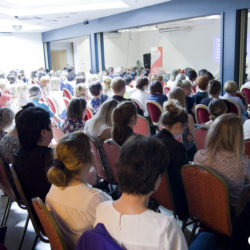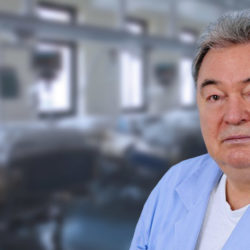Zastosowanie opatrunku UrgoTul® Ag/Silver jako warstwy pośredniej w terapii podciśnieniowej u pacjenta z niegojącą się raną po wielokrotnych laparotomiach
Dorota Domagalska1 | Adam Bobkiewicz1 | Tomasz Drewa2 | Tomasz Banasiewicz1
1 Department and Clinic of General, Endocrinological and Gastroenterological Oncology, Poznan University of Medical Sciences
2 Department of General and Oncologic Urology, Antoni Jurasz University Hospital No. 1 in Bydgoszcz
Tomasz Banasiewicz Department and Clinic of General, Endocrinological and Gastroenterological Oncology, Poznan University of Medical Sciences, 49, Przybyszewskiego Str., PL -60355 Poznan, e-mail: tbanasiewicz@op.pl
Received: 11.04.2018
Accepted: 20.04.2018
DOI: dx.doi.org/10.15374/LR2018013
Leczenie Ran 2018;15(2):93–96
Abstract: Treating of postoperative complications in patients after numerous laparotomies is difficult. In the case of dehiscence the surgical wound, infection and the coexisting formation of intestinal fistulas requires a multidisciplinary approach. In these cases, vacuum assisted therapy is very useful. However, it is necessary to protect the intestines, fistula and surrounding tissues from the action of polyurethane foam – protect the intestines and skin against ingrowing into the black foam. A 54-years-old male patient, with a history of numerous laparotomies was admitted to Clinic to treat complications after left-sided nephrectomy. The patient developed intestinal and enterocutaneous fistulas. Wound dehiscence and necrosis of surrounding tissues was present. Negative pressure wound therapy was applied. Dressing was changed three times. Correction of the stomy was performed. UrgoTul® Ag/Silver was applied each time between the wound and the polyurethane foam as a protective intermediate layer. The use of UrgoTul® Ag/Silver (in patients with infection, dehiscence of wounds, and with enterocutaneous fistulas) showed a significant decrease in the secretion from the intestinal fistula. Healing and closure of the surgical wound, its epithelialization and elimination of inflammation of the abdominal wall was observed.
Key words: intermittent layer, negative pressure wound therapy, post-operative wound infection, UrgoTul® Ag/Silver, wound dehiscence
Streszczenie: Leczenie powikłań pooperacyjnych u pacjentów po licznych zabiegach w obrębie jamy brzusznej jest trudne. W przypadku rozejścia się rany pooperacyjnej, jej zakażenia oraz współistniejącego tworzenia się przetok jelitowych leczenie wymaga wielospecjalistycznego podejścia. Dobre zastosowanie w takich przypadkach ma terapia podciśnieniowa. Należy jednak pamiętać o ochronie jelit i przetoki oraz okolicznych tkanek przed działaniem gąbki poliuretanowej – chronić jelita i skórę przed wrastaniem w czarną gąbkę. W pracy przedstawiono opis przypadku 54-letniego pacjenta po licznych laparotomiach, przyjętego do Kliniki w celu leczenia powikłań po operacji nefrektomii lewostronnej. U chorego wytworzyły się przetoki jelitowe i jelitowo-skórne. Nastąpiło rozejście się rany i martwica okolicznych tkanek. Zastosowano leczenie terapią podciśnieniową, trzykrotnie zmieniając opatrunek i opracowując ranę chirurgicznie. Za każdym razem pomiędzy raną a gąbką poliuretanową stosowano UrgoTul® Ag/Silver jako ochronną warstwę pośrednią. Zastosowanie UrgoTul® Ag/Silver u pacjenta z zakażeniem i rozejściem się rany pooperacyjnej, a także z przetoką jelitowo-skórną skutkowało znacznym zmniejszeniem wydzielania przetoki jelitowej, wygojeniem i zamknięciem się rany pooperacyjnej, jej prawidłowym wynaskórkowaniem oraz wyeliminowaniem stanu zapalnego powłok brzusznych.
Słowa kluczowe: przetoka jelitowa, rozejście się rany, terapia podciśnieniowa, UrgoTul® Ag/Silver, warstwa pośrednia, zakażenie rany pooperacyjnej





